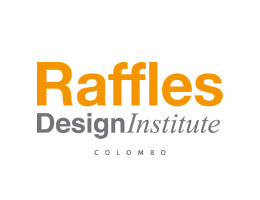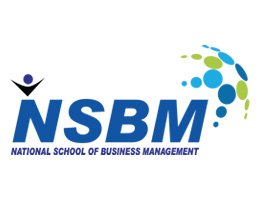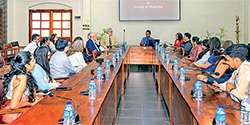Design thinking for value creation

Introduction: Design thinking is an ideology supported by an accompanying process. A complete definition requires an understanding of both. The design thinking ideology asserts that a hands-on, user-centric approach to problem-solving can lead to innovation, and innovation can lead to differentiation and a competitive advantage. This hands-on, user-centric approach is defined by the design thinking process and comprises 6 distinct phases, as defined and illustrated below.
 Not having a proper understanding of design thinking would create problems in advertising companies and in-house design hubs of brand manufacturing companies as the designers would only think of an innovative design from a more of an inside-out perspective where the design that is created is expected to be accepted by the consumers. Whereas in design thinking, there is an element of empathy that comes into play to understand the psyche of the consumer, which is more of an outside-in approach as opposed to the previous technique.
Not having a proper understanding of design thinking would create problems in advertising companies and in-house design hubs of brand manufacturing companies as the designers would only think of an innovative design from a more of an inside-out perspective where the design that is created is expected to be accepted by the consumers. Whereas in design thinking, there is an element of empathy that comes into play to understand the psyche of the consumer, which is more of an outside-in approach as opposed to the previous technique.
History of Design Thinking
A prevalent misperception is that design thinking is novel. Design has been used for a very long time; the results of design processes include monuments, bridges, cars, and subway systems. Good designers have always built meaningful and practical solutions by using a human-centric creative approach. Charles and Ray Eames, a husband and wife design team, used a process known as “learning by doing” to explore a variety of demands and limitations in the early 1900s before creating the Eames chairs, which are still in production today, seventy years later.
Dressmaker Jean Muir gained notoriety in the 1960s for her “common sense” approach to fashion, emphasising both the garments’ tactile quality and external appearance. In their day, these designers were trailblazers. Their methods might be seen as pioneering instances of design thinking since they all gained a profound awareness of the wants and lifestyles of their users. Milton Glaser, the creator of the well-known I????NY logo, effectively captures this idea when he says, “We’re always looking, yet we never really see...The ability to fully comprehend and become aware of something is a result of paying attention to it. Despite these and other pioneering instances of human-centered design, in the commercial world, design has typically been an afterthought, used only to refine a product’s appearance.
Because of this application of topical design, companies are producing solutions that don’t really address the needs of their clients. As a result, several of these businesses shifted their designers from the end, when their influence was minimal, to the beginning of the product-development process. The companies who adopted this human-centric design approach have seen financial gains from producing goods that are shaped by human needs, demonstrating how effective it was as a differentiator.
Why Design thinking is important for brand marketing?
In brand marketing, the value creations happen not just to the company or the brand owner, but also to the end consumer. If a design is pushed through to shelf by means of a pack design or anything in relation to packs and design.
Design Thinking Process
The design-thinking framework follows an overall flow of 1) understanding, 2) exploring, and 3) materializing. Within these larger buckets fall the 6 phases: empathize, define, ideate, prototype, test, and implement. 1 Empathize - Gather information through study about the actions, words, thoughts, and emotions of your users. Assume that enhancing the new user’s onboarding process is your aim. You converse with a variety of real users throughout this period. Ask yourself questions like, “What motivates or discourages users?” and “Where do they experience frustration?” as you closely examine their actions, thoughts, and desires. Getting enough observations under your belt will enable you to start to really understand your consumers and their viewpoints.
Define
Put all of your findings together and see what areas your users are having trouble with. As you identify the demands of your users, start highlighting areas that could use innovation. Think about the onboarding scenario once more. Utilise the information acquired during the empathise phase to extract insights during the define phase. Arrange all of your findings and make comparisons with the experiences that your users are having right now. Exists a pain point that many different users have in common? Determine unmet demands of users.
Ideate
Come up with a tonne of wild, inventive solutions to solve the unmet user demands that were discovered during the define phase. Give yourself and your group complete freedom; quantity always wins over quality, and no concept is too crazy. Gather your team members at this stage and doodle out a tonne of various ideas. After that, ask them to collaborate on ideas by combining and remixing one another’s concepts.
Prototype
Create tangible, realistic representations for some of your concepts. This stage aims to identify the elements of your ideas that function well and those that don’t. Using input on your prototypes, you start to evaluate the viability vs. effect of your ideas in this phase. Give your concepts a tangible feel. If this is a new landing page, create a wireframe and solicit internal input. Modify it in response to feedback, then quickly and dirty code another prototype. Next, distribute it to a different group of people.
Test
Ask your users again for their opinions. Is this solution meeting the needs of the users? Has it made a difference in their feelings, thoughts, or task performance? In case of product marketing, prototype testing gives an indication of the likelihood of success. The process can involve testing with end users as well as intermediaries for feedback. In the FMCG context, intermediaries too add a lot of value in giving feedback. Test your prototype with actual clients to make sure it meets your objectives. In the case of the airline example; Has the onboarding process improved the users’ perspective? Does more visitors to your website spend more time or money on the new landing page? Test as you go along to ensure your vision is being carried out.
Implement
Put the vision into action. Make sure your solution is implemented and has an impact on your end users’ lives. Although it is the most crucial component of design thinking, this one is also the most frequently overlooked. Don Norman asserts that “more design work needs to be done.” Design thinking does not absolve you of the need to really carry out design. It’s not a miracle. One of the biggest practical problems faced by marketers today is, that the designers who handle work for them only think of the design aspect of it. But they also need to think of the practical implications. It could be a simple thing like developing or designing packaging for a product or campaign development, the gap between imagination and implementation should be minimised in the design stage itself.
Conclusion:
Experiences are everything these days, whether they be goods or services, and we have become accustomed to expecting a lot from them. As information and technology continue to advance, they are getting increasingly complex in nature. New unmet requirements arise with every evolution. Although design thinking is just a method of issue resolution, it raises the likelihood of success and ground-breaking invention.









































.jpg)
.jpg)
.jpg)
.jpg)

.jpg)
